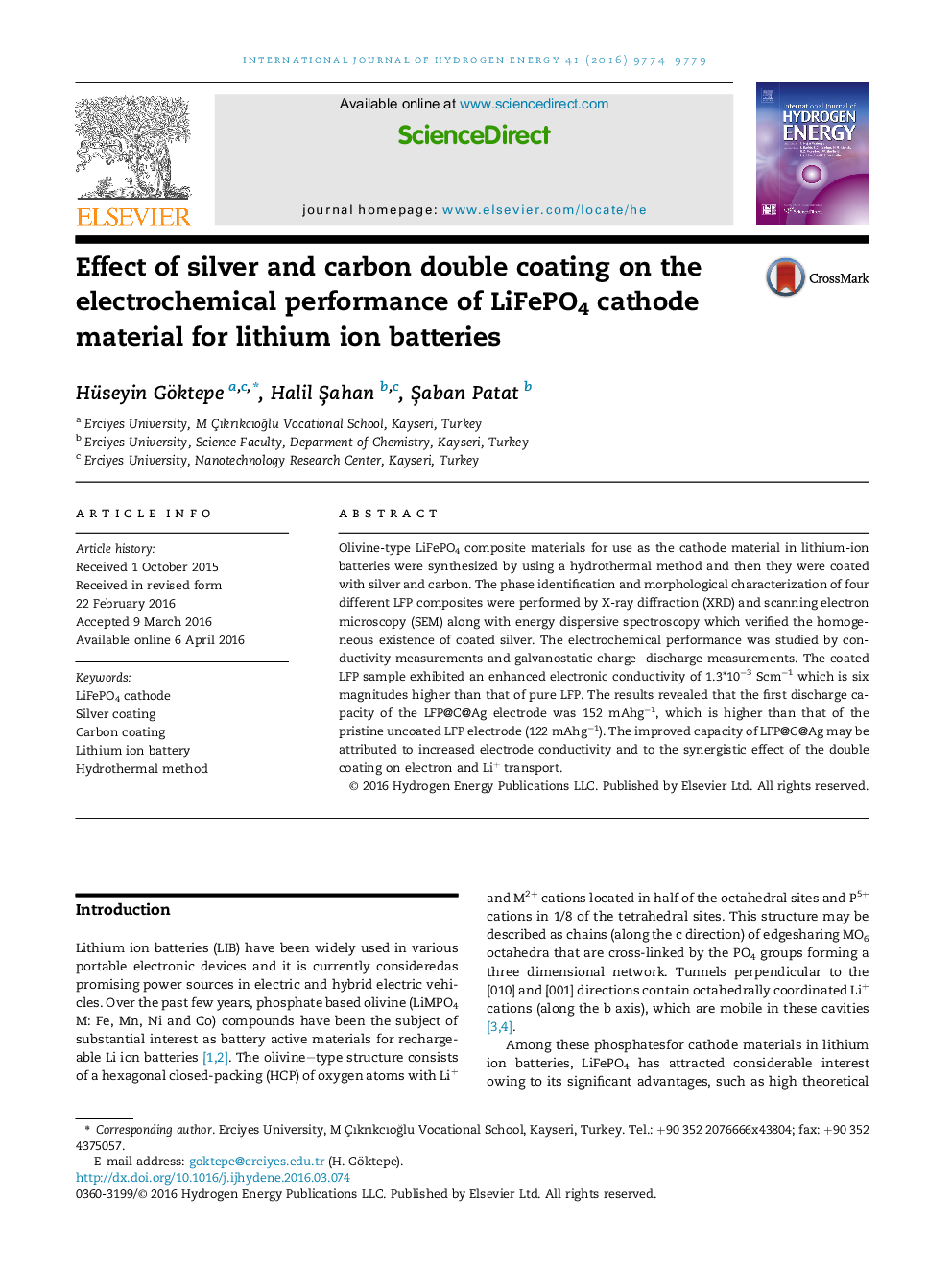| Article ID | Journal | Published Year | Pages | File Type |
|---|---|---|---|---|
| 1277026 | International Journal of Hydrogen Energy | 2016 | 6 Pages |
•The coated LFP sample exhibited an enhanced electronic conductivity of 1.3*10−3 Scm−1.•The first discharge capacity of the LFP@C@Ag electrode was 152 mAhg−1.•The electrochemical impedance spectroscopy shows that, silver coating improved the electrochemical performance of the cathode.•Also silver coating decreased in the charge transfer resistance of the cathode material.•The capacity of LFP@C@Ag maybe attributed to the synergistic effect of the double coating on electron and Li+ transport.
Olivine-type LiFePO4 composite materials for use as the cathode material in lithium-ion batteries were synthesized by using a hydrothermal method and then they were coated with silver and carbon. The phase identification and morphological characterization of four different LFP composites were performed by X-ray diffraction (XRD) and scanning electron microscopy (SEM) along with energy dispersive spectroscopy which verified the homogeneous existence of coated silver. The electrochemical performance was studied by conductivity measurements and galvanostatic charge–discharge measurements. The coated LFP sample exhibited an enhanced electronic conductivity of 1.3*10−3 Scm−1 which is six magnitudes higher than that of pure LFP. The results revealed that the first discharge capacity of the LFP@C@Ag electrode was 152 mAhg−1, which is higher than that of the pristine uncoated LFP electrode (122 mAhg−1). The improved capacity of LFP@C@Ag may be attributed to increased electrode conductivity and to the synergistic effect of the double coating on electron and Li+ transport.
Graphical abstractFigure optionsDownload full-size imageDownload as PowerPoint slide
